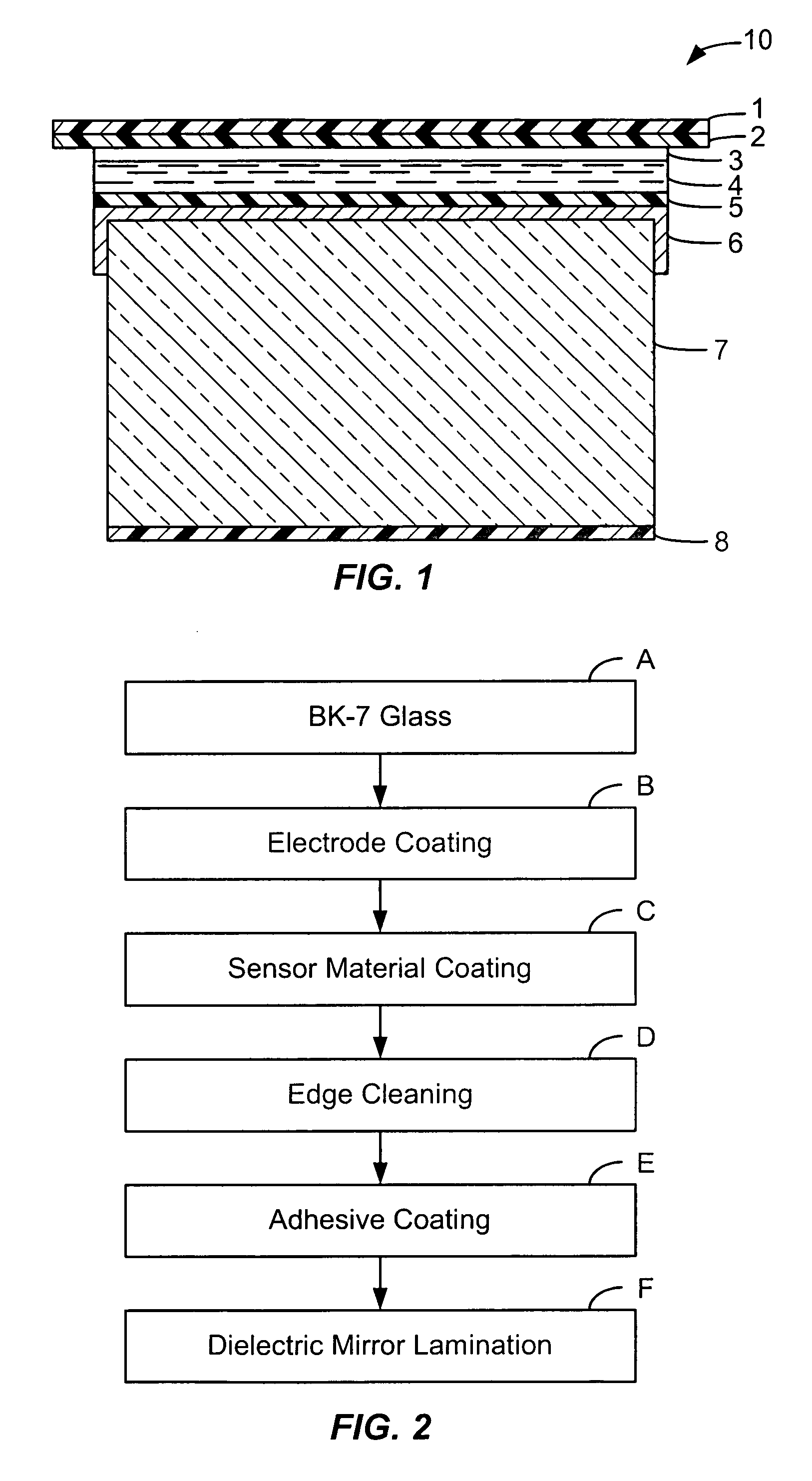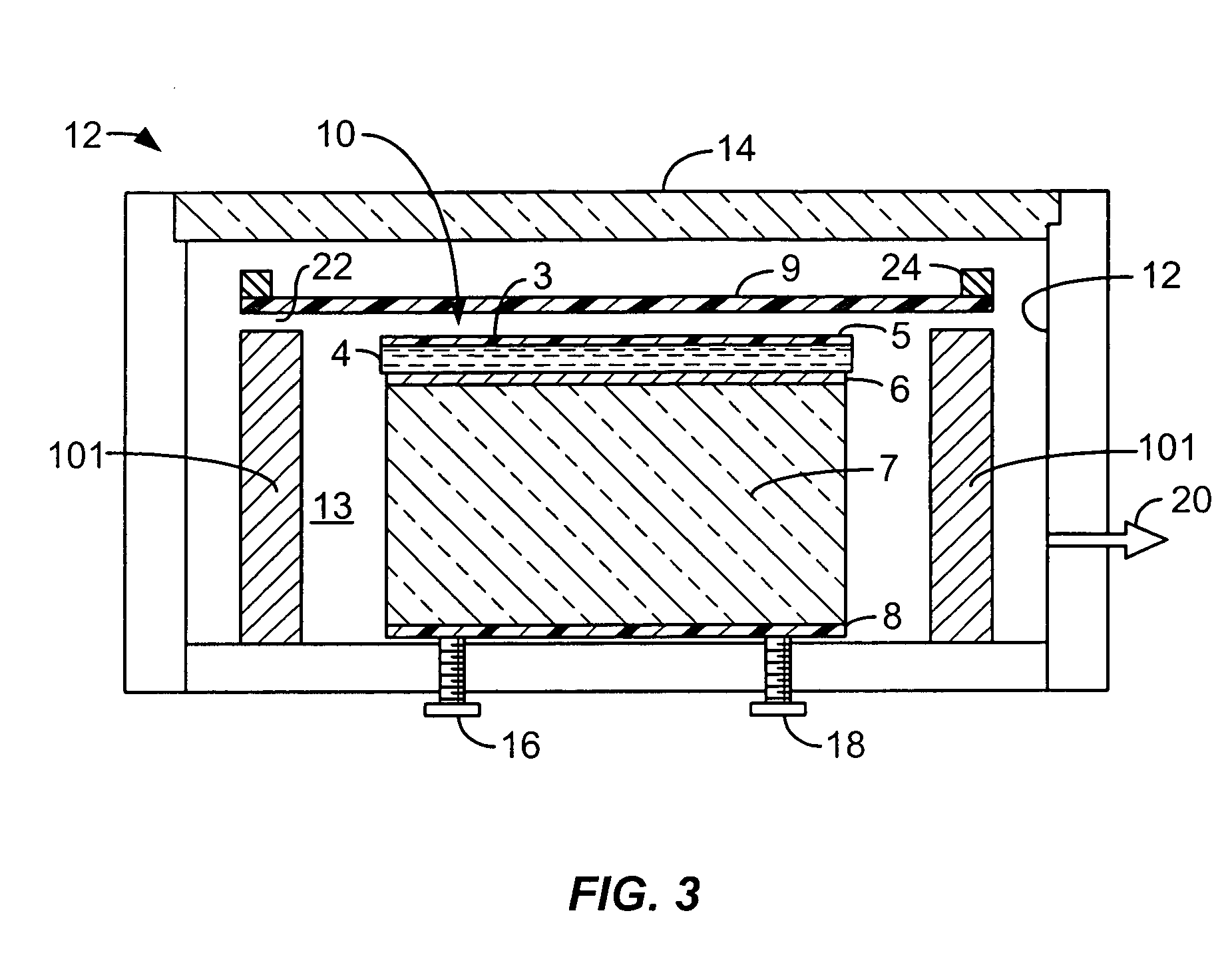Method for fabricating electro-optic light modulator
a technology of light modulator and electrooptic, which is applied in the field of electrooptic sensor material coating, can solve the problems of low yield, low yield, and inconsistent surface flatness of conventional lamination process, and achieves improved sensitivity, excellent surface flatness, and mechanical stability. significant reduction of manufacturing cos
- Summary
- Abstract
- Description
- Claims
- Application Information
AI Technical Summary
Benefits of technology
Problems solved by technology
Method used
Image
Examples
Embodiment Construction
[0017] Referring to FIG. 1, there is shown an electro optic (EO) sensor 10 of an EO modulator fabricated in accordance with the invention. A polyester film layer 1, which is typically a thin Mylar™ film, provides substrate support for a dielectric mirror 2. The substrate / mirror combination is bonded via a thin layer of adhesive 3 to a layer of electro-optic sensor material, specifically a coating of polymer dispersed liquid crystal (PDLC) 4. The PDLC 4 is a directly applied coating on an optional layer of silicon dioxide 5. There is a layer of a transparent electro material, such as indium tin oxide (ITO 6) which in turn is bonded directly to an optical glass substrate 7, which is for example a block of type BK-7 optical glass. The glass substrate or block 7 is optically flat and has an antireflective coating 8 on the optically-smooth surface opposing the PDLC 4 surface.
[0018] Referring to FIG. 2, the process of fabricating the EO sensor 10 according to the invention is illustrated...
PUM
| Property | Measurement | Unit |
|---|---|---|
| thick | aaaaa | aaaaa |
| vacuum | aaaaa | aaaaa |
| angle | aaaaa | aaaaa |
Abstract
Description
Claims
Application Information
 Login to View More
Login to View More - R&D
- Intellectual Property
- Life Sciences
- Materials
- Tech Scout
- Unparalleled Data Quality
- Higher Quality Content
- 60% Fewer Hallucinations
Browse by: Latest US Patents, China's latest patents, Technical Efficacy Thesaurus, Application Domain, Technology Topic, Popular Technical Reports.
© 2025 PatSnap. All rights reserved.Legal|Privacy policy|Modern Slavery Act Transparency Statement|Sitemap|About US| Contact US: help@patsnap.com



